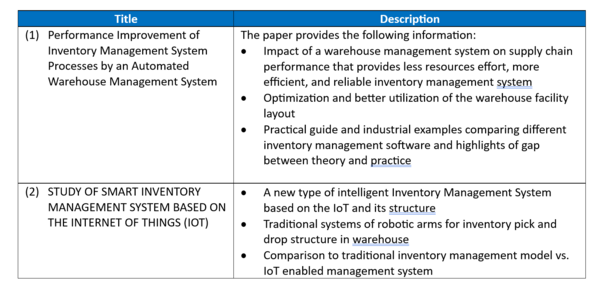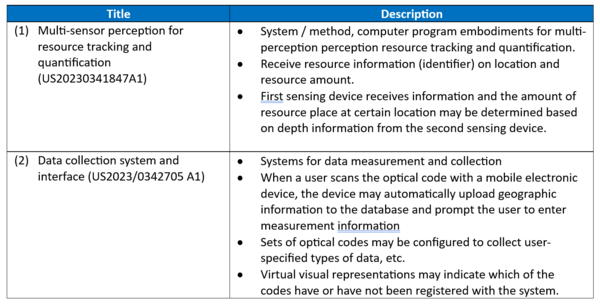Li-Ion Key publications and patents
We provide below a more detailed analysis of the literature and our search for representative patents. This literature review is conducted for our technology of choice: Lithium-ion batteries for transportation applications.
Back to Energy_Storage_via_Battery.
Search methodology
We performed a general search for books chapter and overviews to capture the context of li-ion technology in the field of chemical batteries. We then scope down to Lithium-ion batteries for our research in academic journals and again scope down to lithium-ion batteries for vehicles to search for patents. We use Knovel (general references), Compendex (journals publications) and Google Scholar (citation index) for the publications search, and Patent Lens for the patents search.
Context – From the broad field of secondary battery invention to Lithium ion
A battery is an assemblage of cells (containing two electrodes, an electrolyte traditionally liquid, embedded in a container or housing) connected electrically to provide voltage and current. The field of electric batteries sciences started with Volta (Volta pile, 1800), Daniell (two-fluid cell, 1836), Planté (rechargeable battery, 1860). Research has developed since mostly in Chemistry, Material sciences, to improve the cell design (voltage [V], theoretical and specific energy [Wh/kg] Specific power [W/kg] and cycle life) based on the choice of electrodes and electrolyte that would adequately react as well as the overall electric assemblage. Li-ion batteries are recognized as being first introduced with “Lithium Cobalt Oxide” or LiCoO2 cells, by Sony, in 1990, in anticipation of the boom in electronic devices. (Cairns 2004)
Birth of a technology – patents and then academic research
We find interesting to highlight that lithium-ion batteries as a research field seems to take off (based on the number of publications in academic journals per year, Figure 2.1) after Sony released its first lithium-ion batteries.
The time to market of this technology seems short: ~17 years if we start the clock with the first batteries using Lithium in the 1970’s. The first patents granted in the USA to Sony we found related to lithium-ion technology, were filled in the 80’s and 90’s, concerning different progressive fields, such as: 1981 (“Method of manufacturing Magnetic Powder”), 1985 (“Organic electrolyte cell”), 1987 (“Secondary Battery”, considered as the invention of the Li-ion battery). As for the academic research, the number of publications related to “Lithium-ion batteries” only take-off after 2005… at the 20 years term of the first patterns. The main area of research, represented in Figure 2-2, are related to the electrodes, electrolyte, as well as the host material for Li-ions (graphene, carbon, nickel, …), and more recently management systems and charging patterns. Solid electrolytes are also an area of innovation that we further discuss based on the article of reference.
Journal articles of reference
Since the Nobel Prize in Chemistry 2019 was awarded jointly to John B. Goodenough, M. Stanley Whittingham and Akira Yoshino “for the development of lithium-ion batteries”, we select some of their publications depending on number of citations and date. The three articles we chose give a general overview of the electrochemical batteries history and future challenges (Whittingham 2012), a more specific vision of the Lithium-ion battery by its inventor (Yoshino 2012), and eventually one of the current areas of innovation with all-solid state battery system (Braga et al. 2017).
The article from (Whittingham 2012) provides an in-depth presentation of electrochemical batteries evolution, underlying the status of batteries as “enabling technologies” in the area of portable device, but also electricity grid frequency and / or power supply adjustment, back-up energy supply, and transportation systems (as energy providers or used to capture energy losses such as in regenerative braking systems). The alternative energy storage technologies are discussed, to understand the specificities of batteries as chemical energy storage device, with “some Faradaic reactions” in the bulk of the material – as compared to one very close technology, capacitors, in which the structural integrity of the materials is not challenged and the energy is stored as surface charge. The birth of Lithium-ion batteries are put into the context of upstream advances in batteries technologies in the 1970’s, with the first development of LiTiS2 batteries (Exxon) using pure Lithium as the anode, but as a result the formation of dendrites (electrodeposition of lithium) over cycles caused short out in the cell, and lead to fire, and were thus not yet suitable for the market.
The invention of “Li-ion batteries” that really took off, in the early 1990, used a carbon-based anode, with intercalation of Li ions in the host material. The development of this first model was conceived in the early 1880s and implemented in a practical prototype in 1986, as recalled in (Yoshino 2012), who also give the formal definition of the invention: “nonaqueous secondary battery using transition-metal oxides containing lithium ion such as LiCoO2 as a positive electrode and carbonaceous materials as a negative electrode.” It is interesting to note that one of the main challenges faced by the inventor at that time was to prove that this battery overcame the safety issues and to pass the safety tests in 1986: “I consider the success of these tests to be “the moment when the lithium-ion battery was born"”. The technological breakthroughs made with this invention were to supply the Li-ion by the LiCoO2 instead of metallic lithium, and to develop the nonaqueous electrolyte. This whole cell can be manufactured through a simple production process, no special atmosphere being required for battery assembly.
As its inventor (Yoshino 2012) shows confidence in a continuous exponential expansion of demand for lithium-ion batteries until 2020 – which has been confirmed, we also get a longer perspective in (Whittingham 2012), who imagine in a 25 years perspective (2037) that technology of energy storage will move beyond Li-Ion batteries: “Intercalation-based batteries will retain a significant fraction of the market, but will have switched to nonlithium-based electrochemistry, as there is almost certainly not enough lithium in the world to provide for transportation, grid storage, and home/office storage.”
Many areas of technological improvement are discussed in (Whittingham 2012), starting within the scope of Li-ion battery to push intercalation chemistry, observing that there is still significant dead weight and volume in this kind of batteries. Different electrochemical reactions might be more efficient: conversion reactions instead of intercalation reactions especially. Improvement in energy density of cells is crucial, as is safety and scalability. Overall an interesting takeaway from this article is that the reactions taking place within the cell are not completely understood yet, providing “formidable challenges” in a long-term improvement perspective. However, Author reminds the physical limits of this technology: “It is important to remind the reader that energy storage devices, like batteries, capacitors, pumped hydro, or compressed air, do not obey Moore’s law. There is an upper limit to their storage capabilities, and this can be readily calculated.”.
Lastly, the third article (Braga et al. 2017) provides an illustration of a current “hot” area of research: the development of all solid state battery, using a Li+ or Na+ glass electrolyte with a metallic lithium or sodium anode. The result according to the authors is a safe and low-cost secondary battery cell with high energy density and long cycle life. This is really interesting to note that the development of the new solid electrolyte prevents dendrites from occurring and thus enable to reuse the metallic anode from the 1970’s, without the safety issues previously experienced. The use or Sodium instead of Lithium also makes this solution more scalable. Yet, if the tests provides measures of performance, the exact reactions happening in the cell, mixing capacitance effect and electrochemical reaction, are under discussion (Steingart and Viswanathan 2018). The authors still present a very promising perspective, with only a few steps to perfect a viable product: optimizing the thickness of the electrolyte, the required voltage, and the composite cathode to improve the voltage, and the ion transfer across the cathode/electrolyte interface. (Braga et al. 2017).
Patents of reference
For the patents search, we scope down again to electric vehicles applications, and to the US only (to avoid redundancies). Among the all field of patents related to electric vehicle battery (figure 2-3), we refine our search to focus on patents with “lithium-ion battery” in the title and “vehicle” in the abstract (17 results). We then select the most cited patterns in the recent years, picking in different areas (identified from the Assignee): two direct applications in the vehicle industry with two patents assigned to Toyota (Abe et al. 2017) and to Ford Global Technology (Vann Decker et al. 2014), and an “accompanying” type of patent related to battery housing, jointly assigned to Bosh and Samsung (Woehrle and Leuthner 2017).
Ford patent describe a lithium-ion battery rejuvenation procedure, based on a battery management process. When a predetermined capacity loss is detected, a controller would change the state of charge (SOC) of the battery, pushing under the voltage associated with “zero state of charge”, producing a change in the electrochemical characteristics of the electrodes, and thus increasing the remaining battery charge capacity. This process is specifically put into the use-case of an electric vehicle (the motor is connected to the battery as the load).
Toyota patent (Abe et al. 2017) describes a comparable process: certain state of charge (SOC) of the Lithium Ion battery creates specific loss of capacity. The inventors provide a methodology to monitor and control the battery’s SOC in order to prevent this capacity loss. This invention may apply to vehicles as well as battery-equipped electronic device (laptop). Compared to the previous patent, a more detailed description of the causes of the battery’s capacity degradation is given. In addition to the comparable “Plug-in hybrid vehicle controller”, a “next operating time setting device” is also introduced, to schedule the battery’s maintenance operation out of the car service providing hours. The charging and discharging method constitutes the “third embodiment” of the patent, and is claimed as part of the invention.
Last, Bosh and Samsung (Woehrle and Leuthner 2017) provide an interesting accompanying system: a battery housing for lithium-ion cells, which has the specificity to integrate a “cut-out” area able to be open in the event of failure of the cell. This area coupled with “dispenser housing” can make possible the introduction of flame-inhibiting, flame-retarding and / or flame-extinguishing agent inside the cell in the event of a hazard (mechanical shock, increase in temperature or pressure). This area of innovation seems promising since battery technologies fall under the scope of transporting hazardous materials international regulations (United Nations Recommendations on the Transport of Dangerous Goods) (Cairns 2004). As highlighted with the article of reference, safety tests are critical for new battery systems development.
References
Bold entries are the articles and patents of reference.
- Abe, Takeshi, Akira Tsujiko, Tomitaro Hara, Keiko Wasada, and Sachie Yuasa. 2017. Method of charging and maintaining Lithium-ion secondary battery, battery system, vehicle and battery-mounted device. US 9,812,741 B2, issued 2017.
- Braga, M. H., N. S. Grundish, A. J. Murchison, and J. B. Goodenough. 2017. “Alternative Strategy for a Safe Rechargeable Battery.” Energy and Environmental Science 10 (1): 331–36.
- Cairns, Elton. 2004. “Batteries , Overview. Batteries, Transportation Applications.” In Encyclopedia of Energy, 1:117–39.
- Steingart, Daniel A., and Venkatasubramanian Viswanathan. 2018. “Comment on ‘Alternative Strategy for a Safe Rechargeable Battery’ by M. H. Braga, N. S. Grundish, A. J. Murchison and J. B. Goodenough, Energy Environ. Sci., 2017, 10, 331-336.” Energy and Environmental Science 11 (1): 221–22.
- Vann Decker, Edward, Chi Paik, Dawn Bernardi, and William Moore. 2014. Method For Revitalizing And Increasing Lithium Ion Battery Capacity. US 9,358,899 B2, issued 2014.
- Whittingham, M. Stanley. 2012. “History, Evolution, and Future Status of Energy Storage.” Proceedings of the IEEE 100 (SPL CONTENT): 1518–34.
- Woehrle, Thomas, and Stephan Leuthner. 2017. Battery Housing For Lithium-ion Cells. US 9,806,325 B2, issued 2017.
- Yoshino, Akira. 2012. “The Birth of the Lithium-Ion Battery.” Angewandte Chemie - International Edition 51 (24): 5798–5800.
Back to Energy_Storage_via_Battery.

